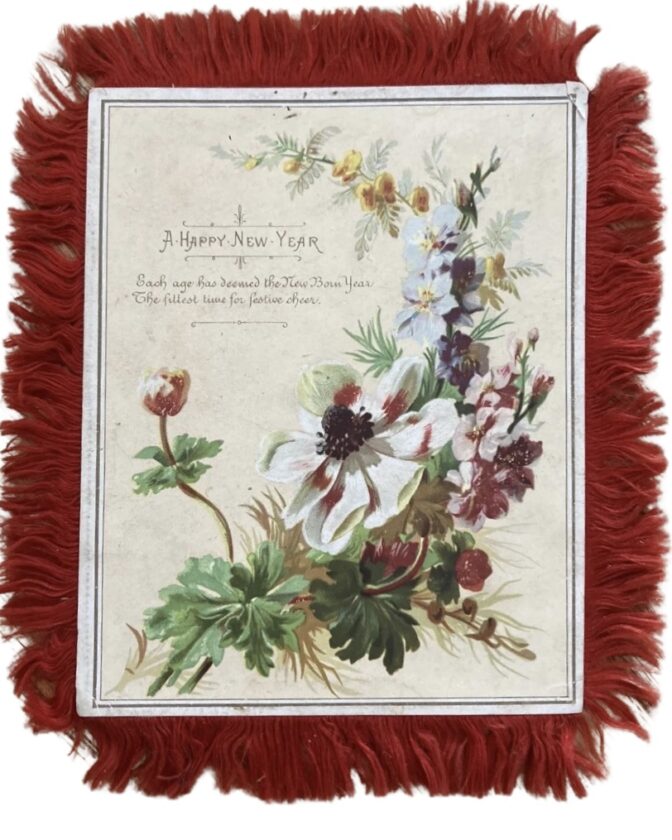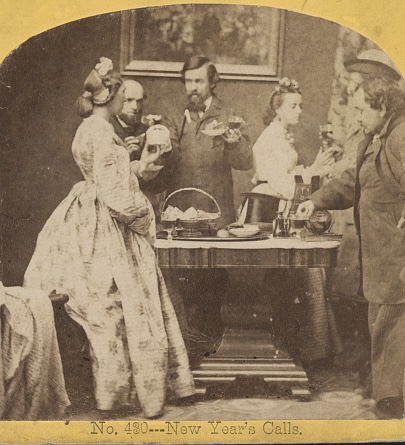PASCACK VALLEY—This article was written by Pascack Historical Society founder John C. Storms in 1950. Storms, a local historian, was born in Park Ridge in 1869. As an adult he founded Bergen County’s first newspaper, the Park Ridge Local, in 1889. Storms was a prolific writer, leaving behind a tremendous archive of his first-hand recollections of Pascack Valley life as it was in the late 19th century. The Pascack Historical Society’s museum, at 19 Ridge Ave., Park Ridge, is named for him. Here he writes of the New Year’s Day celebrations of his youth…
While Christmas was a day of family gatherings and religious exercises, New Year’s Day was an entirely different affair.
Watch Night was quite generally observed, by gatherings of a social nature. As the clocks turned their hands to midnight the people turned out from their homes to welcome the incoming year. Men and boys fired guns, women shouted a welcome, and people wished everyone around them a Happy New Year.
The taverns were open all night, and dancing continued until daylight. It was a time for sleighing parties—straw rides to some fairly distant hotel, to eat, to drink, and to be merry. It was a suitable time for weddings, and many a household was formed at these times.

Soon after the noon meal, New Year’s calling began. In sleighs if there was snow, or wagons, parties of young men began making calls on the ladies within a radius that was limited only by their ability to continue their trip. This was expected, and all homes where there were females kept “open house.” It didn’t matter whether these were acquaintances or not. All who came were warmly welcomed. The tables bore ample refreshments, but the principal feature was glasses of wine, and in many cases a big pot of rum, kept hot on the stove. From this the steaming liquor was dipped in plentiful helpings.
Frequently two or more young ladies would “receive” at the home of one of them. Between nibbling at little cakes sprinkled with anise seed and sipping of lemon flavored punch, there was a mutual exchange of congratulations and felicitations. Then the young men moved on to the next home. Thus, a dozen or more calls could be made in an hour, and “calling” continued until well into the evening.
The young ladies counted the number of calls they had received, and told of it proudly, the number never diminishing with the telling. For this event the young men had provided themselves with a supply of calling cards. These were not the engraved bristol cards of the ordinary social character, things practically unknown among us in those early days. Most of them carried a message of Happy New Year printed in one corner. Sometimes this appeared in red on gold lettering. Frequently the edges were cut in rough or pointed designs, variety and originality being desired more than an evidence of good taste. Sometimes the edges were decorated with red silk fringe, which was considered very ornate. A sentimental line appeared on some, while others jocularly carried a request: “When I am drunk send me home.”
In many cases this injunction would have been appropriate, though not told on the card.
Everyone was expected to be at least a little tipsy before the day ended. Numerous callers, all of whom insisted that the ladies toast them with the wine, made it necessary that great care be exercised to retain a reasonable condition of sobriety.
Then came the New Year’s balls when dancing was indulged in until a late hour. The 48 hours that marked New Year’s was truly a strenuous time in the old days.

There were men who let their imbibing last for several days. Thus arose the common expression, frequently heard, “He is keeping it the old way.”
Consulting the Almanac—the folks did depend on it religiously—they were informed that now came the “January thaw.” This was a serious matter in those days, for it meant that the roads would be half-axle-deep in mud, and practically impassable. On December 20 the taxes had been paid, so, with what had been spent for the holiday celebration, there was not much actual cash on hand. Fodder for the cattle, too, was shrinking. The farmer cast an appraising eye at the hay mow. He knew that on February 1 there must be not be less than half of his provender left in order to carry through until the next season.
—John C. Storms
